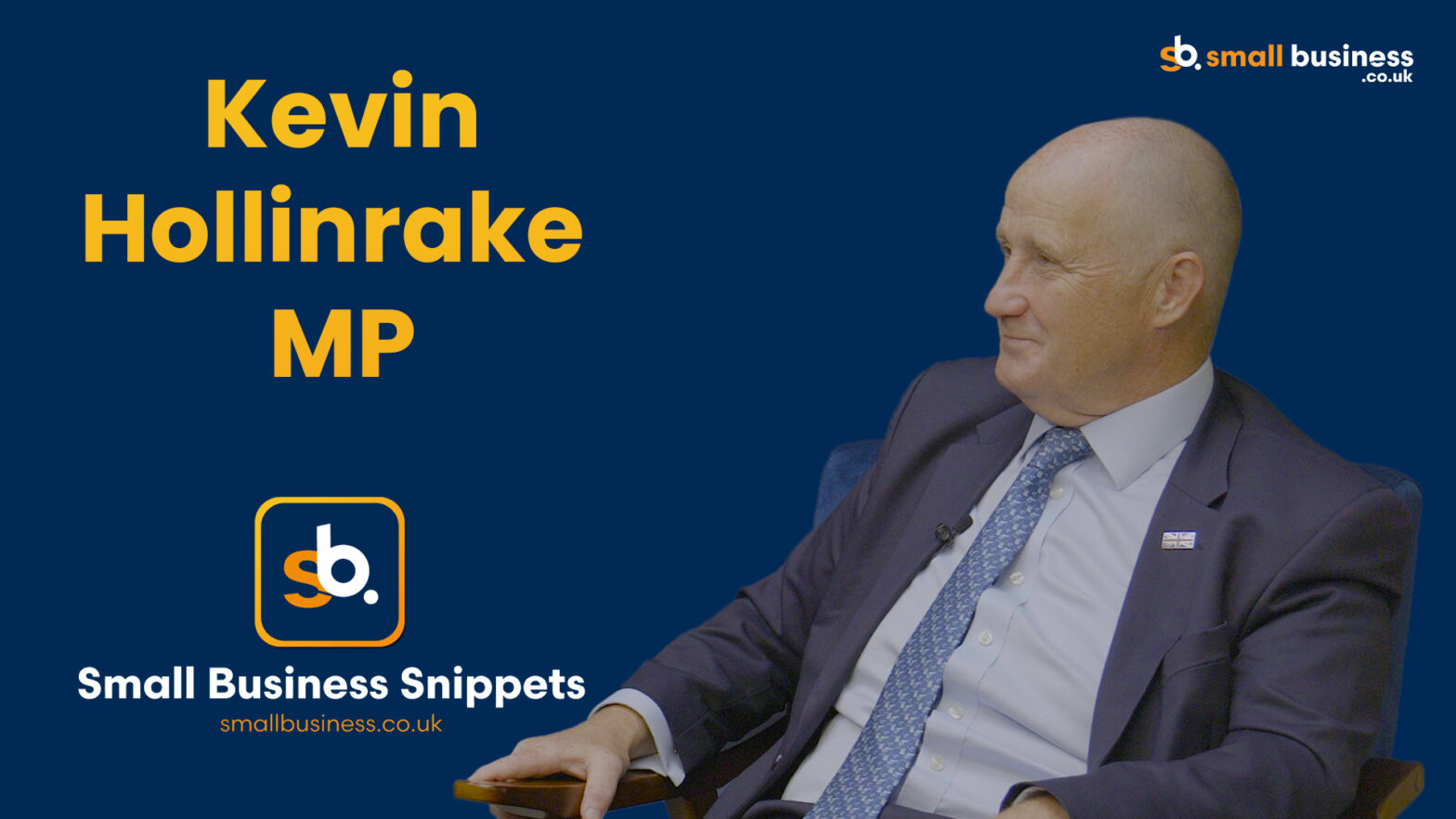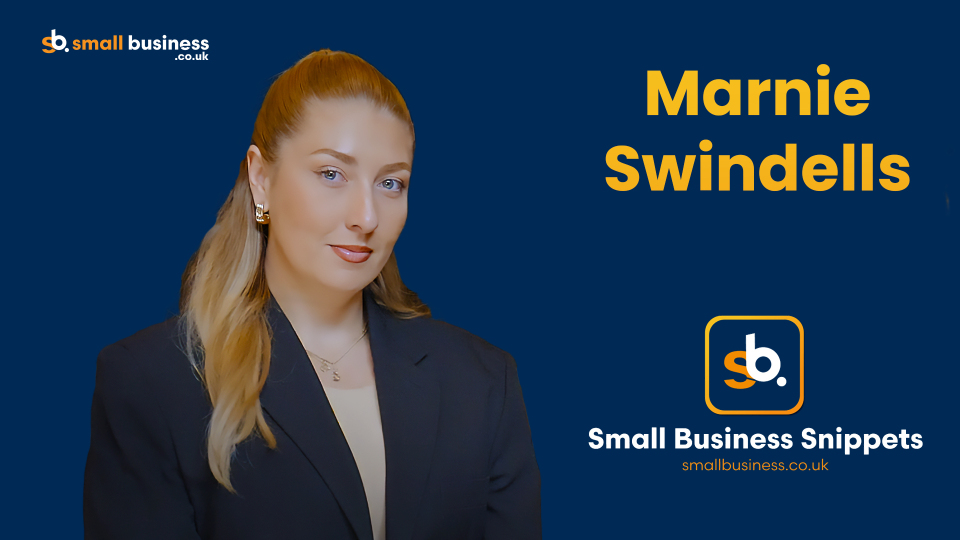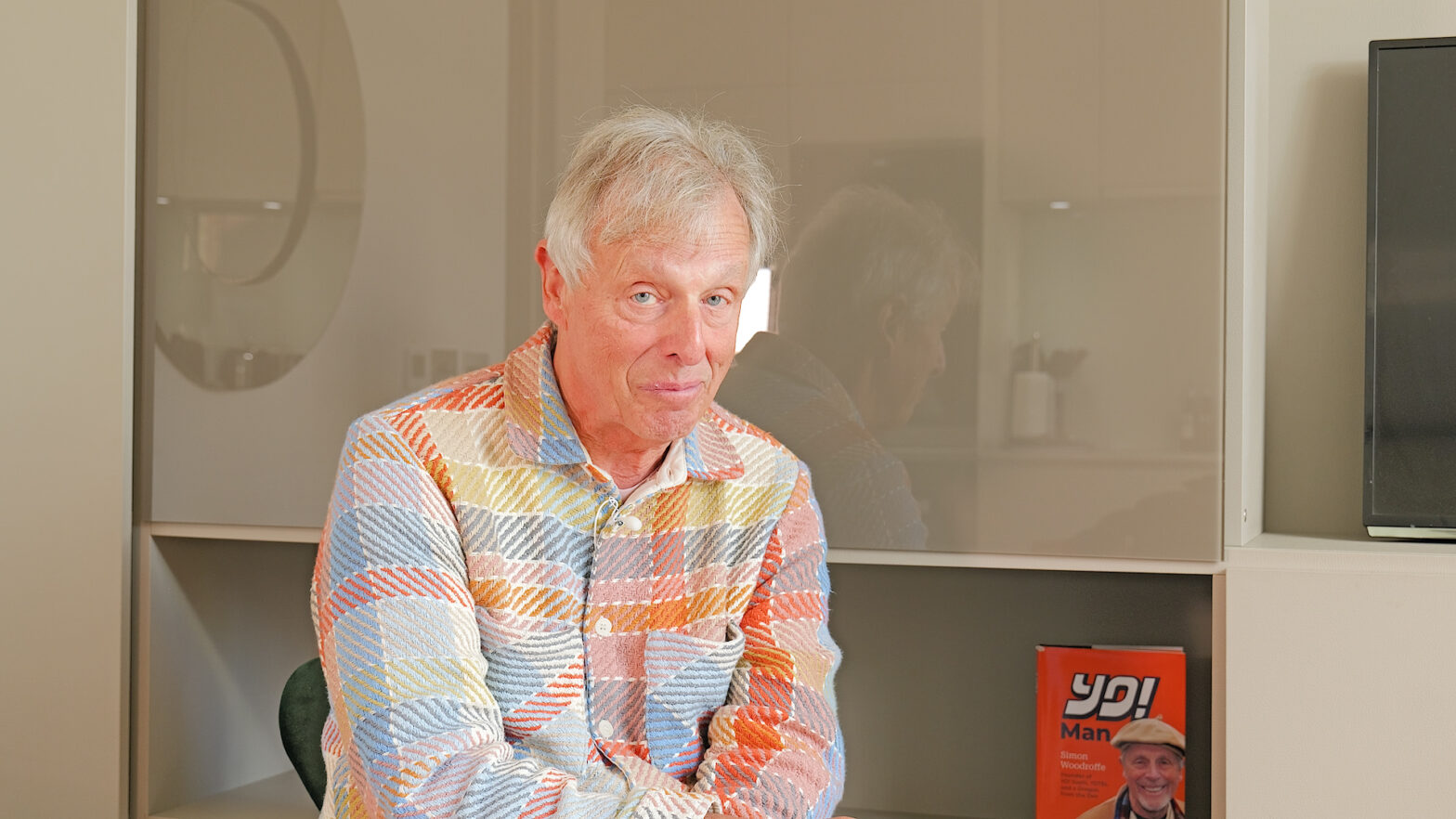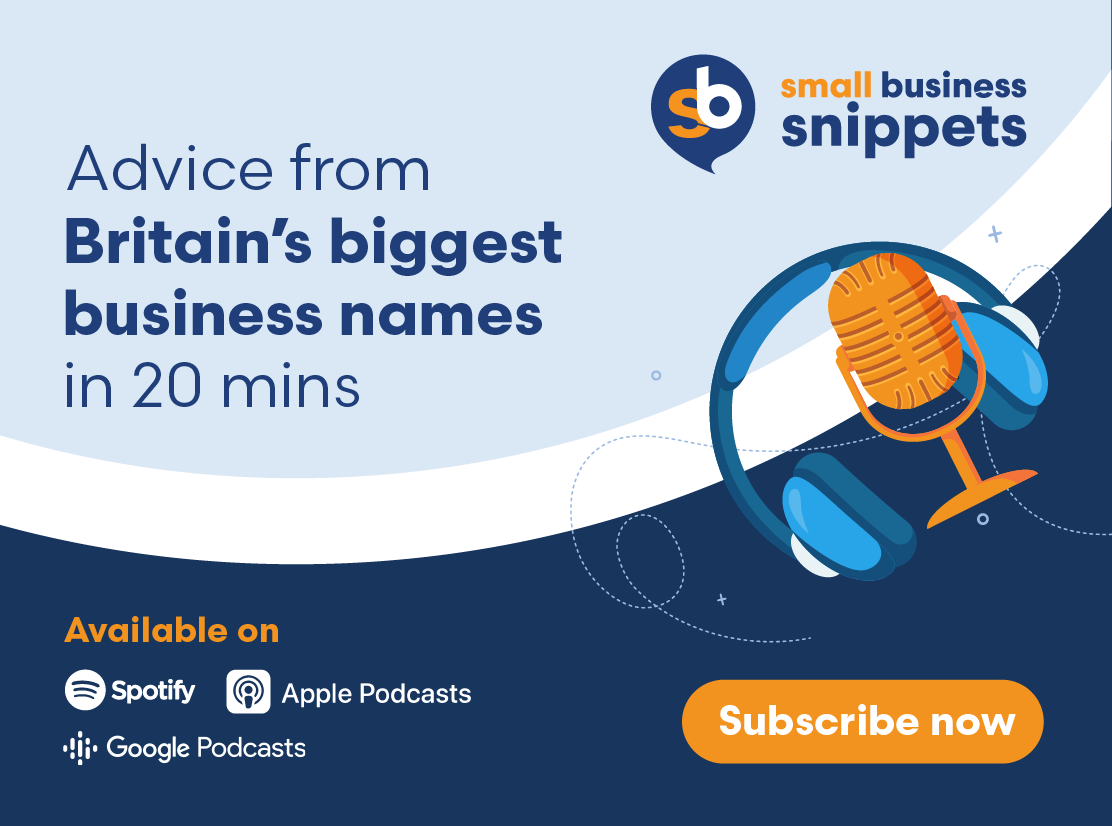Welcome to the second series of Small Business Snippets, the podcast from SmallBusiness.co.uk.In this episode of Small Business Snippets, I chat to John Tusa, author, journalist and one of the founding presenters of BBC’s Newsnight.
He shares his experiences of the boardroom and how risk analysis and cumbersome objectives can overshadow your organisation’s core purpose.
Have a listen to it in the media player below.
- Investor and former Dragon, Jenny Campbell
- Digital guru and investor, Sherry Coutu
- Entrepreneur and former Dragon, Rachel Elnaugh
- Businesswoman and Dragon, Deborah Meaden
- Entrepreneur and The Apprentice 2005 candidate, Tim Campbell
- Gousto CEO, Timo Boldt
- Entrepreneur and The Apprentice 2018 candidate, Jackie Fast
- Investor and former Dragon, Piers Linney
- Investment fund manager, Nicola Horlick
- Supermodel turned entrepreneur, Caprice
We’ve got podcast episodes from the first series looking at:
- How one business owner’s mental breakdown caused her to see trolls from her past
- How one entrepreneur hired a videographer to track their every move and build their business brand
- How funding a business led one entrepreneur to stress-related alopecia
- One entrepreneur’s first professional public speaking engagement
- Adapting to UK life and learning English before starting a business
- Securing seed funding
- Finding the perfect head of customer care
- Reaching a £1 million annual rate of return
- Boosting client numbers from 30 to 850
- Starting a brand new business from scratch
To find out more about Small Business Snippets, you can download the trailer.
If you want to listen to the podcast elsewhere, it’s available on iTunes, Google Play, SoundCloud and Spotify. It’d also be great if you could leave us a review and subscribe.
You can also visit smallbusiness.co.uk for more on leadership and creativity in business.
Remember to like us on Facebook @SmallBusinessExperts and follow us on Twitter @smallbusinessuk, all lower case.
Here’s the transcript of John Tusa’s podcast interview
Hello and welcome to Small Business Snippets, the podcast from SmallBusiness.co.uk. I’m your host, Anna Jordan.
Today we have John Tusa, author, journalist and one of the founding presenters of BBC’s Newsnight.
He’s served on several boards including The British Museum, the Clore Leadership Programme and, since 2014, the European Union Youth Orchestra. On top of that, John was the managing director of the BBC World Service and London’s Barbican Centre.
Today we’re going to be talking about the secrets of the boardroom, as outlined in his latest book, On Board: The Insider’s Guide to Surviving Life in the Boardroom.
Anna: Hi John.
John: Hi Anna.
Anna: How are you doing?
John: Pretty well, thank you. Looking forward to this, looking forward to talking to you.
Great. So as mentioned in the intro, I’m going to start with your latest book, On Board: The Insider’s Guide to Surviving Life in the Boardroom. In the book, you talk about the importance of having a plurality of expertise, but at the same time make clear that artistic institutions and not-for-profits are very different from businesses. Are there any transferrable lessons from these types of boardroom to the business boardroom?
John: Well actually, my guru around governance, who was a major American businessman called Kenneth Dayton from Minneapolis, and he said that there is no difference between arts boards and cultural boards and corporate boards and, if anything, my British contacts said that cultural boards are much more complicated than business boards because they have so many different layers of accountability.
There aren’t two worlds, there’s only one world and that is governance and the relationship between the supervisory board and the executive board. And, if anything, arts and culture boards are more complicated than the others. That’s not me saying it; that’s businesspeople saying it.
Ahh, that is interesting. I understand that, at times, the CEO of a company can also be the chairman [of the company board], but they can be very different roles. How do they differ, exactly?
John: The CEO, managing director – call them what you want – are responsible for management, for actually running the place. And they are also responsible for devising the strategic direction of the organisation. The supervisory board are there to advise, help, encourage, monitor, warn and, if necessary, get rid of the chief executive.
Again, my great American guru, Kenneth Dayton, said that governance is governance, that is, you look after the overall organisation, and management is management – and you mustn’t confuse them. And that is why anyone who thinks they can be a chairman and managing director, is riding readily, and speedily, for trouble. They’re separate functions. Somebody defined the role between the chairman and the chief executive as partnership, but separation. That is close partnership until the time that you have to sack them. That is an absolutely essential relationship – and a tension – but a constructive tension, at the heart of the governance management business.
Right – so this is typically one of the most turbulent relationships you’d find in the boardroom?
John: They can be. But on the other hand, I had at least two, maybe three, very good relationships with either the chairman when I was chief executive or the chief executive when I was chairman. And when you get it right, it is extremely productive, it’s very enjoyable and it’s very good for the organisation concerned.
Let’s be quite clear – any organisation which has a bad relationship between the chair and the chief executive is in real trouble – and I saw several of those. You can’t take too much trouble over getting that relationship right and making sure the relationship is right. One of the key things about it is absolute openness and transparency. I said to my chief executive at the University of the Arts London, ‘You will always hear it from me first. You will never hear rumours and you will never hear gossip. If there’s anything to deal with, you and I will deal with it first – alone and properly.’
If you do it that way, you have trust, you have openness, you have transparency – and you can have a terrific and successful relationship.
For a business owner or director who is fairly new, who isn’t used to the boardroom environment, perhaps is intimidated by it, what advice do you have for them in terms of survival?
John: It shouldn’t be survival, in the sense that it is a key part of the relationship. If you are whatever size of enterprise and you have a supervisory board, the assumption is that it is a constructive partnership. But, as I mentioned before, the supervisory board mustn’t interfere in management. And also, a chief executive must make sure that the supervisory board doesn’t interfere in governance.
It may be necessary sometimes to say ‘look, this is an executive decision’ or ‘this is part of management’ but it ought not to be a relationship of fear and, in any case, the chief executive should always have some idea of who the chair will be bringing on to the supervisory board. The really important thing is that the chair has to make sure that members of the trustee board are there to provide their individual skills, yes, but also to give good overall advice, but not to interfere.
On that basis, it should be positive, harmonious, constructive and lead to the success of the organisation.
How about managing tensions that come up between member of the board – what’s the best way to go about resolving those?
John: It all depends what they are, but if there are tensions between individual members, you might have to decide that one of them is in due course invited to step down.
Or it’s very important for the chair to make it clear if a member is overstepping their mark, being too intrusive, taking up too much time or being too unnecessarily dominant. The chair is responsible for the way the board works and they have to make it clear. I had one case at the University of the Arts London where I was chairman of the court of governors and one of the members of the court was the trade union representative and he refused to understand that he was there to look after the interests of the university as a whole and not just the trade union members. He would stand up and he would harangue the court as if we were a trade union meeting. I put up with this for two meetings and then I had a huge row with him and told him that this was not an acceptable way of behaving.
It was a big public row, I didn’t enjoy it and in a way I regretted it but it made it clear to him and to everybody that that was not how the court was going to run and it worked very much better afterwards.
Anna: In the book you talk about managing egos. I suppose it’s just a case of reading the situation and on balance knowing how to deal with different types of personality in the boardroom.
John: Yes, in general and overwhelmingly, the people I sat on boards with, who are people with real authority and substance and responsibility in the areas they came from, overwhelmingly understood that they were there to support the organisation. You are holding in trust for others. It’s not something where you play individual games with it. And overwhelmingly, the people I sat on boards with understood that very well and left their egos at the door.
Absolutely. In the past I knew you’ve spoken about having ‘the wrong ambition’. Tell me a little more about what you mean by that and how it can affect your standing as a leader.
John: I think that sometimes in life, and this is nothing to do directly with governance, that you may misjudge what your abilities are or what you might be doing.
If you want this example, the worst one was when I decided to accept the offer to be head of a Cambridge college and I did that for all the wrong reasons. I did that because it seemed a posh thing to do, which it was. It seemed a good address, which it was. It was absolutely the wrong job for me. I shouldn’t have touched it and I lasted around six or seven months.
There’s a sense of what can I do, what can I do well and when am I being prodded by a false ambition and false vanity? That’s an important part of self-preservation.
There may also be some times when you shouldn’t accept a chairmanship. For a very short time, I had the post of chairman of the Victoria and Albert Museum and chairman of the University of the Arts London. That was, in retrospect, very unwise. Fortunately, the people at the University of the Arts London thought, ‘well, if he’s going to be chairman of the V&A as well, it’s obvious that that will be his first priority’ and at a very early stage said, ‘look, we’re worried about this, and we don’t think it will work. Would you like to think about it?’ And when I thought about it, I realised that they were absolutely right. It won’t work and once again, I’ve gone into that for the wrong kind of ambition. There will be a clash, and because I’d said yes to the University of the Arts London first, I stood down from the chair of the V&A. So that was the wrong kind of ambition and thank goodness, I was saved from getting into, what could have been, a very confused situation.
Talking more about the board as a whole, in terms of chaos and crises, there’s possibly no bigger than what we’ve been experiencing over the past months. How do you manage difficulties in the boardroom when you’re going through something like a global pandemic?
John: With difficulty, and I think I’d try to go back to the basic principles of management and governance. Say, if I were chair of some organisation, I would expect the board of management to come up with a strategy – six months, one year, eighteen months, two years – first a strategy for survival, then a strategy for development then a longer term strategy. That would be put to the supervisory board, we would look at what the financial implications were, decide whether it was doable or not doable and then there would be a process of the supervisory board reviewing what management suggested, sometimes suggesting less, sometimes suggesting more, sometimes suggesting that they should be more ambitious in these times.
You can’t, for example, because there’s a pandemic, just say ‘we’ll stop doing anything’ because actually, the implications are too great. So the times are tough but the way that people behave in them makes it even more important that they behave as a good board and executive together should behave. The behaviour shouldn’t change.
I’d like to go a little bit off-piste here. You’ve said that the BBC increasingly exercises ‘business dogma over creative values.’ What do you mean by that and how do you maintain creative values in a growing business?
John: I come back without apology to ‘why are we here? Why are you here? Why is the organisation here? Why is the new organisation starting up?’ Because somebody wants to do something.
Business tools are just that: they’re a set of tools. If you are observing them and that’s all you’re doing, I don’t think that you’ll ever succeed. There are toolkits to help you succeed. What worries me about the BBC is to, too often, they go into forms of business behaviour which lose sight of the nature and the purposes of broadcasting and programmes and the needs of the audience. I’ll give you one example which I think may help. That is the whole business of risk analysis. Everyone says you need risk analysis and you’ve got to be very serious, you’ve got to know what’s coming over the hill.
On one occasion we were looking at risk analysis for the university at the University of the Arts London. By the time the centre had listed its risks, every one of the six colleges had listed their risks and different faculties had listed their risks, it was about six or seven pages and, as I recall, about 130 risks. It’s ludicrous.
And it was the chair of the audit committee, who’s an accountant, who said ‘I can’t deal with this, nobody can deal with this’. He said ‘let’s have eight, ten, a dozen, maybe – a dozen main strategic risks. He said let’s get rid of the rest. This becomes a separate activity in its own right, dreaming up risks. It’s ludicrous. And he also said, ‘if you’re going to have a risk register, why not have an opportunity register?’ He said that risk and opportunity are different sides of the same coin.
Anna: Yeah, I understand. And I think it’s a good exercise for business owners to have this opportunity register.
John: Can I also say about objectives? A good colleague of mine, actually he was the chair of the British Museum and he used to run Unilever. On one occasion, he was at the gathering of chairs of the major cultural institutions, had a meeting organised by the department of culture, media and sport. They were discussing – the chairs and the department, ministers and so on, the whole business of objectives. This man who used to chair Unilever said, ‘ you know, in my years of chairing Unilever, we would set about seven or eight objectives, and if I got most of the people, most of the time, to work to half a dozen of them, I thought we were doing very well.’ And he noticed that the secretary of state looked a little pale. Afterwards a senior civil servant came up to him and said, ‘you know when you said you could work to eight objectives and if six were observed, you were doing very well? He said that we in the department set 48 objectives this morning.’
That again is an example of a management tool becoming something completely useless. And by the by, the man who invented objectives said, ‘if an objective isn’t being met, you may have the wrong one. Ditch it, think of another one.’
That’s not a great use of your resources. I guess my final question is what advice do you have about setting objectives in the boardroom?
John: I’ve always had a, what some would regard as an over-light view of objectives. I was managing director of the Barbican Centre for 12 years. In general, I say this without false modesty, it was a much better organisation at the end of 12 years than it was at the beginning. It wasn’t just me, of course, that was my team. And from time to time, people would say to me ‘did the corporation of London set you strict objectives, what you had to do? And I said no, they never said anything, but I knew that I worked to four objectives: 1) run a good arts centre 2) run it within the financial limits that you have 3) bring credit to the corporation of London so that everyone can say ‘isn’t the corporation of London wonderful? They fund the Barbican and 4) don’t insult the Lord Mayor. In 12 years, we didn’t need any other objectives.
I would say strip yourself of these things and say,‘are they helping me do the things that I want to do, what the organisation needs done or are they a substitute for making sure the organisation works properly?’ And if you can shed all that and keep things clear, then the governance will work better and the management will certainly work better.
What about critics that would say that you need SMART goals that are measurable and based on precise numbers?
John: The answer to that is measures measure what measures measure. Measures hardly ever get to the heart of what an organisation is about. You look at the finances the whole time, of course you do. In the case of the BBC World Service, you looked at the audiences. You’re aware of numbers, you use them, but you don’t say that such and such a number is a success, and if we don’t it must be a failure. It’s much more complicated than that. They may be a guide, but they are not the most important thing which determines the success or failure of an organisation.
Anna: Absolutely. I think in business today we do have a way of getting caught up in it and it causes a lot of tension and anxiety. Where, as you say, remembering what you’re doing, what people need and what keeps it going should be at the heart of it. Well, that seems like an ideal place to finish. Thanks ever so much for coming on the podcast, John.
John: Thank you very much, Anna. Nice to talk to you.
John’s latest book, On Board: The Insider’s Guide to Surviving Life in the Boardroom, has been published by Bloomsbury and is available now from Amazon and all other major book retailers. You can also visit smallbusiness.co.uk for more articles on leadership and creativity in business. Remember to like us on Facebook @SmallBusinessExperts and follow us on Twitter @smallbusinessuk, all lower case. Until next time, thank you for listening.





